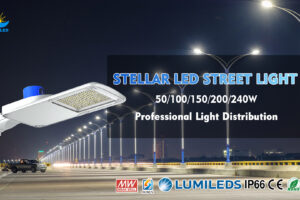Poorly designed road lighting can lead to higher accident rates and energy waste. Addressing these issues ensures safer and more efficient road environments.
In road lighting design, safety, visibility, and energy efficiency are key. Proper illuminance levels tailored to different road types, uniform light distribution to minimize glare and dark spots, and selecting the right color temperature for visibility all contribute to an effective system. Pole placement must be optimized for coverage, and energy-efficient LED solutions should be prioritized. Additionally, designs must account for environmental impacts, withstand harsh weather, and balance costs with long-term maintenance for sustainable road lighting.
Let’s dive into the essential aspects of road lighting.
Table of Contents
Why is Street Lighting so Important?
Street lighting plays a crucial role in urban and rural infrastructure, ensuring safety, functionality, and aesthetics. By illuminating roads, sidewalks, and public spaces, street lights enhance visibility and reduce accidents for drivers, cyclists, and pedestrians. Well-lit areas also help deter crime, making communities feel safer—especially in urban areas where activity continues after dark.
Proper street lighting improves traffic flow, helps drivers navigate intersections more efficiently, and reduces congestion. Additionally, modern LED streetlights contribute to a city’s appeal, creating a welcoming atmosphere while consuming less energy. They align with sustainability goals by cutting energy consumption and lowering carbon emissions. Effective street lighting can also support businesses, encouraging evening commerce and vibrant nighttime economies. In short, street lighting is essential—not just for convenience, but for safety, energy efficiency, and community development.
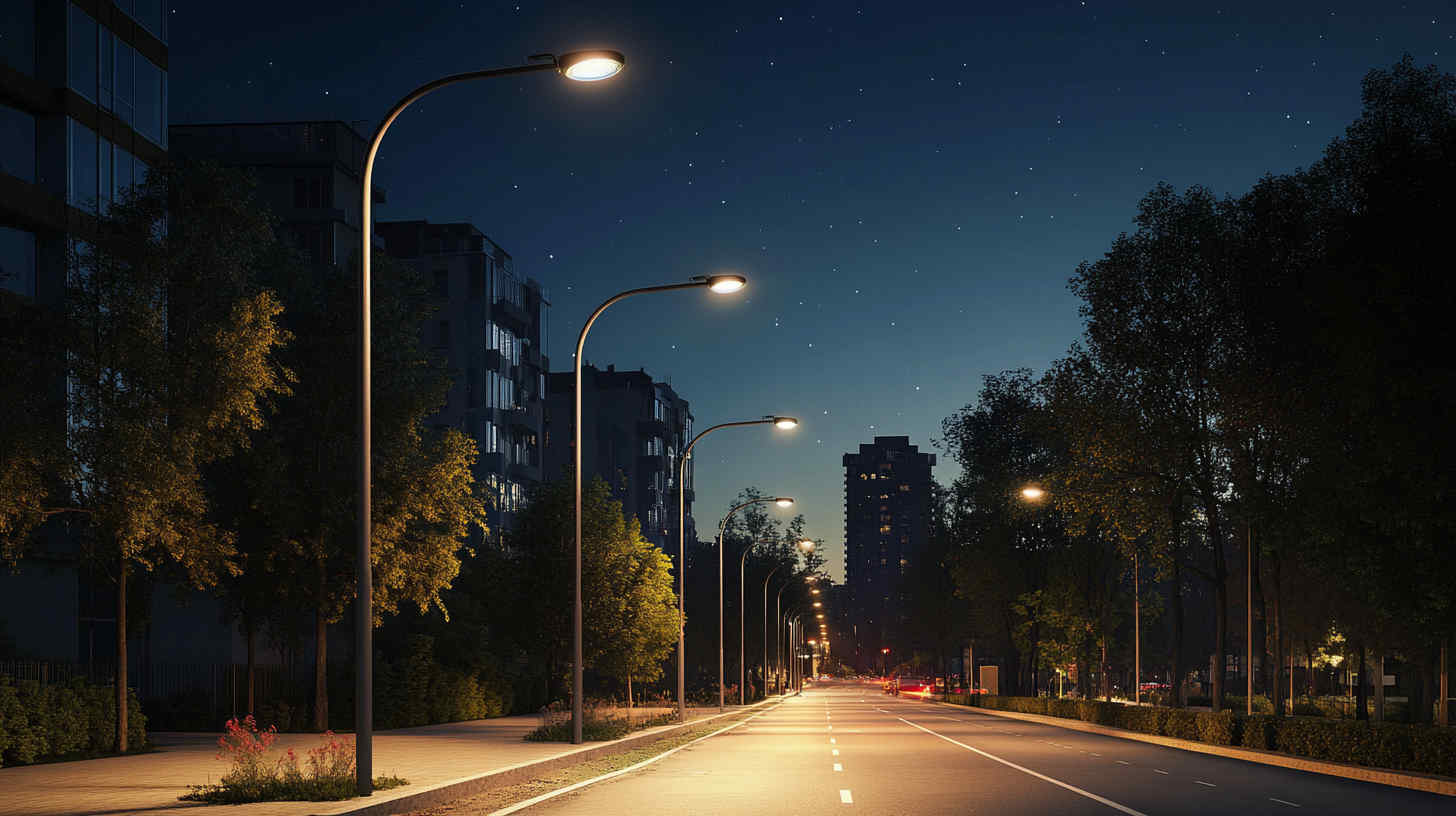
Factors to Consider in the Design of Road Lighting
1. Illuminance Levels
Road lighting must meet specific brightness standards based on the road type. Highways, residential streets, and intersections all require different illuminance levels to ensure safety for both drivers and pedestrians.
2. Uniformity of Light
Consistent lighting across the road reduces dark spots and glare, improving visibility. A well-designed system ensures even light distribution, preventing visual discomfort for drivers.
3. Glare Control
Excessive glare can impair visibility and distract drivers. Using proper beam angles and shielding techniques minimizes glare, improving safety.
4. Color Temperature and Rendering
LED streetlights typically range from 3000K to 5000K, providing a natural or cool white light that enhances visibility. A high Color Rendering Index (CRI) is essential for accurately recognizing objects and colors, improving driver awareness.
5. Energy Efficiency
Energy consumption is a significant concern. LED streetlights are preferred for their lower energy usage, longer lifespan, and reduced maintenance costs compared to traditional lighting.
6. Pole Placement and Height
The spacing, height, and arrangement of light poles determine how well the road is illuminated. Proper placement prevents shadowed areas and ensures consistent lighting coverage.
7. Road Type and Traffic Conditions
Lighting requirements vary based on road usage. Highways, city streets, pedestrian crossings, and rural roads each require tailored lighting solutions to address visibility and safety needs.
8. Environmental Impact
To reduce light pollution, modern streetlights are designed to direct light downward, avoiding unnecessary skyglow. Energy-efficient LEDs further minimize carbon footprints.
9. Weather and Durability
Road lighting must withstand rain, snow, strong winds, and temperature fluctuations. Choosing corrosion-resistant materials and waterproof designs ensures durability and long-term performance.
10. Cost and Maintenance
Balancing initial costs with long-term maintenance expenses is key. LED lighting systems are a cost-effective choice, offering minimal maintenance and longer lifespans compared to conventional lighting.
By addressing these factors, road lighting systems can be designed to offer optimal safety, efficiency, and sustainability.
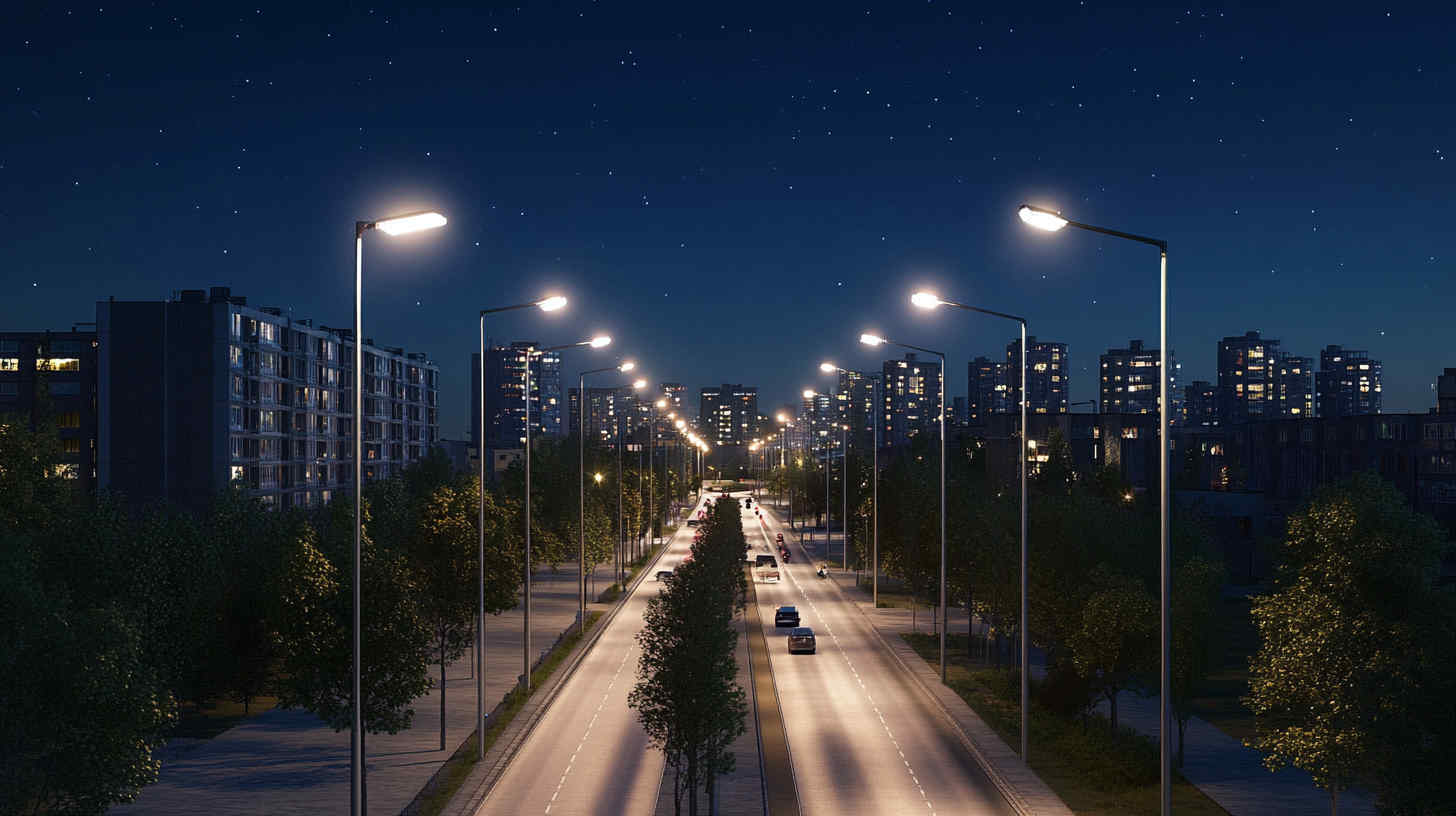
Standards for Street Lighting Design
Street lighting design must adhere to specific safety, efficiency, and visibility standards. These standards vary by region but typically define parameters such as illuminance, uniformity, and glare control. Below are key standards and considerations:
1. Illuminance Levels
Different road types require different brightness levels:
– Main Roads: 15–50 lux for fast-moving traffic.
– Residential Roads: 5–15 lux due to lower traffic density.
– Pedestrian Areas: 10–20 lux for clear visibility.
2. Uniformity
A uniformity ratio (minimum illuminance ÷ average illuminance) ensures consistent lighting:
– Main Roads: Uniformity ratio ≥ 0.4.
– Residential Streets: Uniformity ratio ≥ 0.3.
3. Glare Limitation
Glare must be minimized to prevent discomfort and enhance safety. Standards use:
– Unified Glare Rating (UGR) ≤ 22 for urban roads.
– Threshold Increment (TI) ≤ 15% for main roads.
4. Color Temperature and Rendering
- Color Temperature: 3000K–4000K for urban streets, 4000K–5000K for highways.
- Color Rendering Index (CRI): CRI > 70 to enhance visibility and object recognition.
5. Energy Efficiency
Energy-efficient street lighting uses LEDs with efficacy of at least 100 lumens per watt, reducing power consumption and maintenance.
6. Pole Placement and Height
- Spacing: 25 to 50 meters based on road width and coverage needs.
- Height: 6–12 meters, depending on road classification.
7. International Standards
- IESNA RP-8 (North America) – Covers illuminance, uniformity, and glare control.
- EN 13201 (Europe) – Defines road lighting performance and energy efficiency.
- CIE Standards (Global) – Provides guidelines for streetlight classification.
8. Light Pollution Control
Modern standards require full cut-off or shielded fixtures to reduce upward light emission and minimize skyglow.
Adhering to these standards ensures that street lighting enhances safety, efficiency, and sustainability.
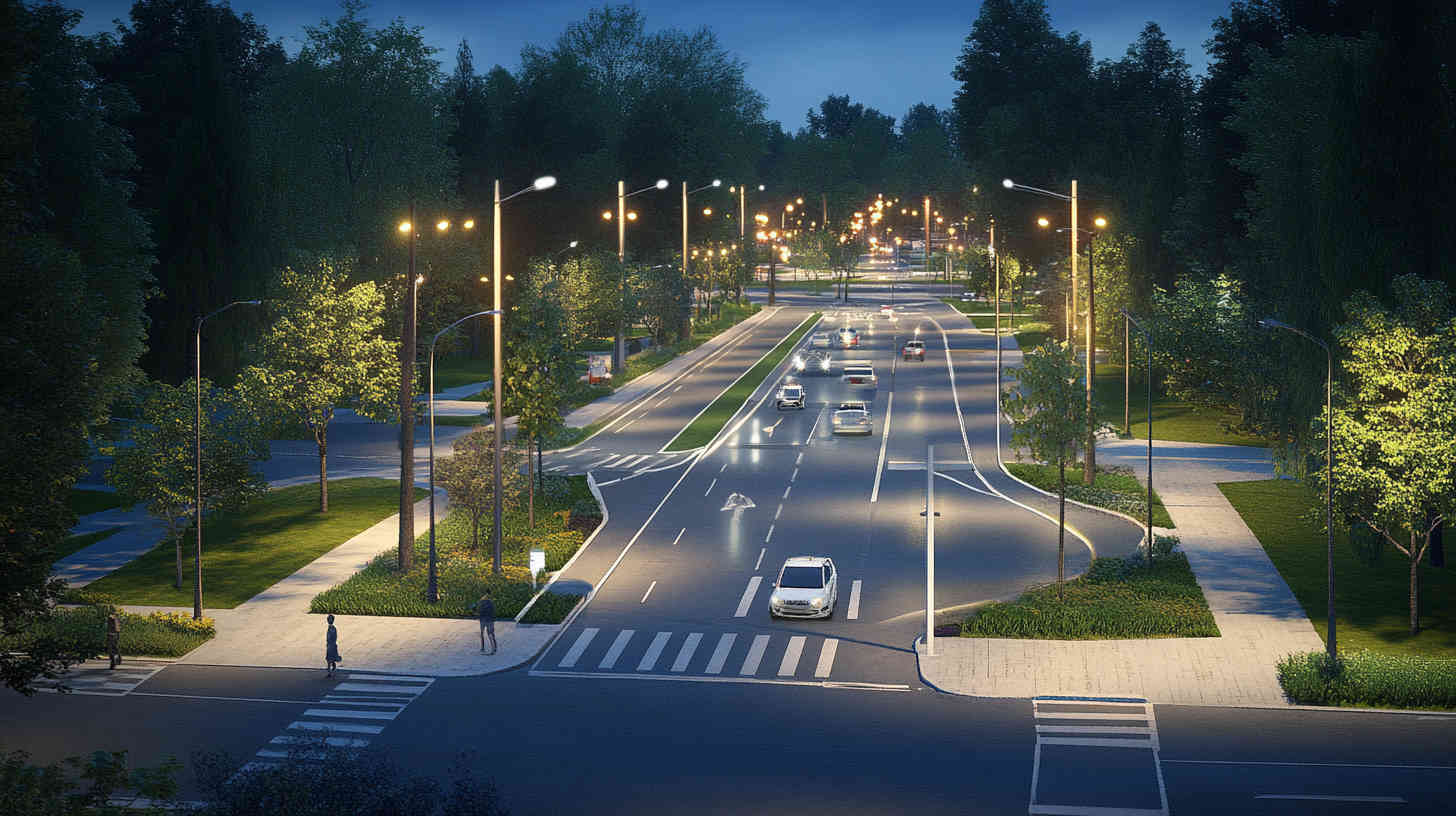
How to Design Efficient Street Lighting
Designing efficient street lighting requires balancing functionality, energy savings, and environmental impact. Below are the key steps:
1. Define the Requirements
- Assess Road Type: Highway, urban street, residential road, or pedestrian pathway.
- Traffic Patterns: Consider vehicle and pedestrian density, speed, and peak hours.
- Compliance Standards: Follow applicable standards like IESNA RP-8, EN 13201, or local regulations.
2. Choose the Right Lighting Fixtures
- LEDs for high efficiency, long lifespan, and precise light control.
- High-quality LED chips and drivers for durability and stable performance.
- Optical control to reduce glare and prevent light spill.
3. Optimize Pole Placement and Height
- Taller poles for wide roads, shorter poles for residential streets.
- Spacing: Typically 3–4 times the pole height for even distribution.
- Proper mounting angles to direct light efficiently.
4. Improve Energy Efficiency
- Smart controls: Use dimming, motion sensors, and adaptive lighting.
- Optimize brightness: Avoid excessive lighting to save energy.
- Efficient LED drivers to reduce power losses.
5. Ensure Uniformity and Visibility
- Uniformity Ratio: ≥ 0.3 for residential roads, ≥ 0.4 for highways.
- Color Temperature: 3000K–4000K for clear but comfortable lighting.
- High CRI (≥ 70) to improve object recognition.
6. Minimize Light Pollution
- Shielded fixtures to prevent upward light spill.
- Directional optics to focus light only on the roadway.
- Glare reduction through proper beam angles.
7. Ensure Durability and Easy Maintenance
- Weather-resistant fixtures to withstand rain, snow, and corrosion.
- Modular designs for quick replacements and minimal downtime.
- Long-lifespan components to reduce maintenance costs.
8. Use Lighting Simulation Tools
- Dialux or Relux to model lighting performance and energy savings.
- Simulations help detect dark spots and optimize placement.
9. Monitor and Improve Post-Installation
- Smart monitoring systems to track performance and detect failures.
- Energy audits to evaluate efficiency and adjust as needed.
- Feedback collection from road users for continuous improvements.
By following these steps, street lighting designs can maximize safety, efficiency, and sustainability, making roads safer and more cost-effective.

How to Choose Street Lights
Selecting the right street lights is essential for ensuring safety, energy efficiency, and durability. Here are the key factors to consider:
1. Understand the Application
- Road Type: Identify whether the lights are for highways, urban streets, residential areas, or pedestrian pathways. Each requires different lighting specifications.
- Traffic Density: Busy roads need brighter lights with high uniformity, while low-traffic areas may require lower illuminance.
- Weather Conditions: Choose fixtures designed to withstand extreme temperatures, high winds, and heavy rainfall.
2. Choose the Right Type of Light Source
- LED Lights: LEDs are the best choice for high energy efficiency, long lifespan, and superior lighting quality.
- Color Temperature:
- 3000K–4000K (Neutral white) → Ideal for urban areas, balancing visibility and comfort.
- 4000K–5000K (Cool white) → Best for highways and high-traffic zones to improve clarity.
3. Evaluate Technical Specifications
- Illuminance and Uniformity: Ensure compliance with lighting standards to avoid dark spots and excessive brightness.
- Luminous Efficacy: Look for fixtures with 100 lumens per watt or higher for better efficiency.
- Color Rendering Index (CRI): A CRI of 70+ ensures clear object recognition and enhanced safety.
4. Consider the Fixture Design
- Beam Angle: Select an angle suited to the road width for optimal coverage.
- Glare Control: Choose fixtures with anti-glare shields to prevent visual discomfort.
- Light Pollution: Use full cut-off or shielded fixtures to reduce skyglow and unnecessary light spill.
5. Assess Energy Efficiency
- Smart Controls: Opt for dimming, motion sensors, or adaptive lighting to optimize energy use.
- Power Consumption: Choose low-wattage LEDs that provide maximum brightness with minimal energy use.
6. Prioritize Durability and Maintenance
- Weather Resistance: Look for IP65 or higher-rated fixtures for dust and water protection.
- Material Quality: Choose corrosion-resistant materials like aluminum or stainless steel for longevity.
- Long Lifespan: LEDs with 50,000+ hours of life reduce replacement and maintenance costs.
7. Ensure Easy Installation and Maintenance
- Modular Design: Opt for fixtures with easily replaceable components.
- Mounting Options: Verify compatibility with existing poles and mounting systems.
8. Verify Standards and Certifications
- Ensure compliance with recognized standards:
- IESNA RP-8 (North America)
- EN 13201 (Europe)
- RoHS, CE, and UL certifications for safety and environmental compliance.
9. Evaluate Cost and Warranty
- Initial Cost vs. Long-Term Savings: Balance upfront investment with energy savings and maintenance costs.
- Warranty: Choose lights with a minimum 5-year warranty for reliability.
By considering these factors, you can select high-performance street lights that provide safety, cost-effectiveness, and environmental sustainability.
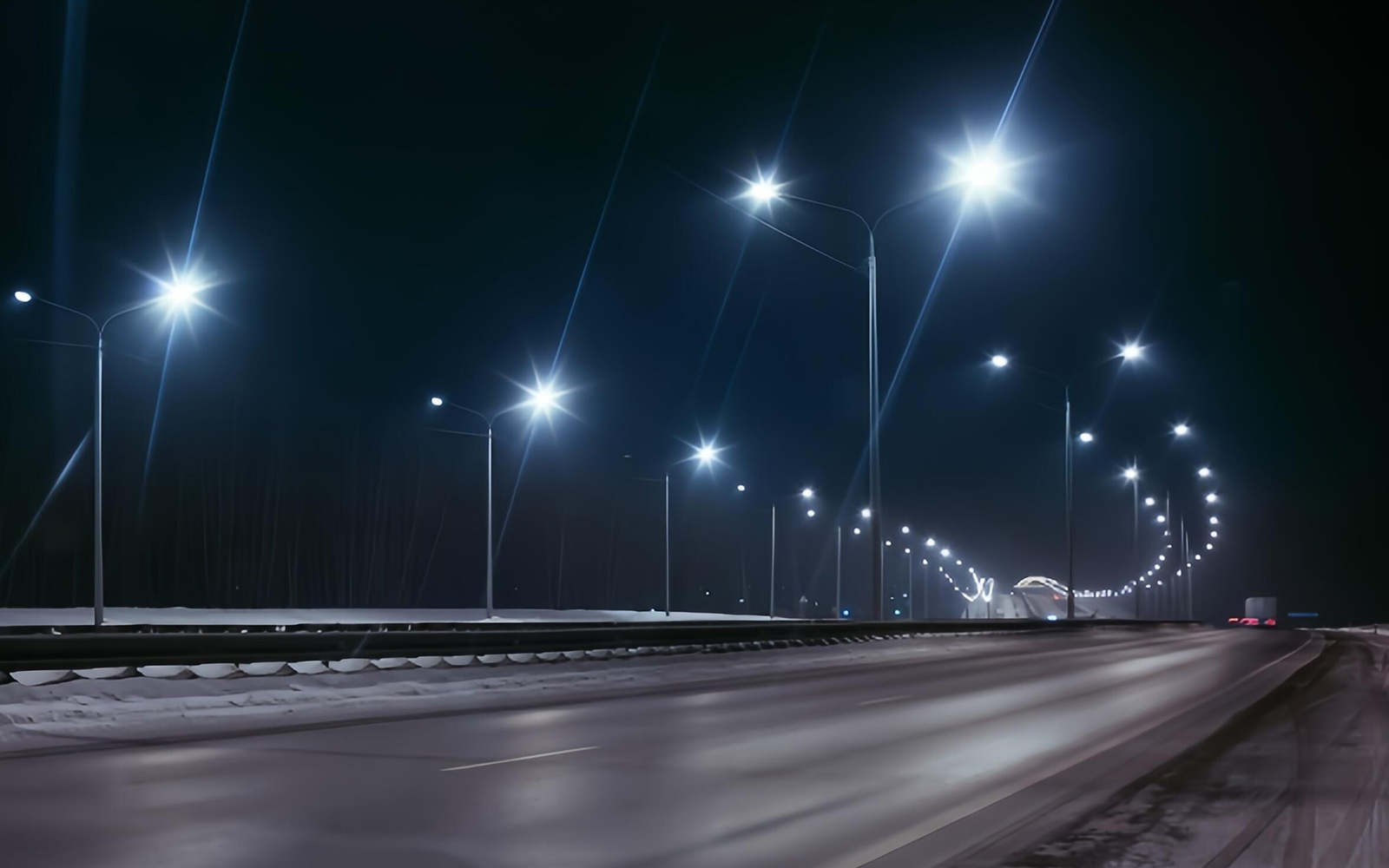
Primary Considerations in Street Lighting Design
The main goal of street lighting is to enhance safety. Proper lighting ensures visibility for drivers, pedestrians, and cyclists, reducing accident risks and improving security. Key safety-focused elements include:
1. Adequate Illuminance
- Sufficient brightness is required to illuminate road surfaces, surroundings, and hazards.
- Standards such as IESNA RP-8 or EN 13201 define minimum illuminance levels for different road types.
2. Uniform Light Distribution
- Even lighting prevents shadows and dark spots, ensuring all areas remain visible.
- A good uniformity ratio helps reduce eye strain and improves night visibility.
3. Glare Control
- Excessive glare can blind drivers and pedestrians, increasing accident risks.
- Proper beam angles and shielding reduce glare for a comfortable and safe experience.
4. Minimized Light Pollution
- Properly directed light reduces unnecessary light spill, improving road clarity.
- Full cut-off fixtures prevent skyglow and reduce light trespass into residential areas.
5. Adaptation to Traffic Conditions
- High-traffic roads require brighter lights, while low-traffic areas can use adaptive or dimmable lighting to save energy.
While energy efficiency, aesthetics, and environmental impact are important, ensuring safety through proper brightness, uniformity, and glare reduction remains the top priority in street lighting design.
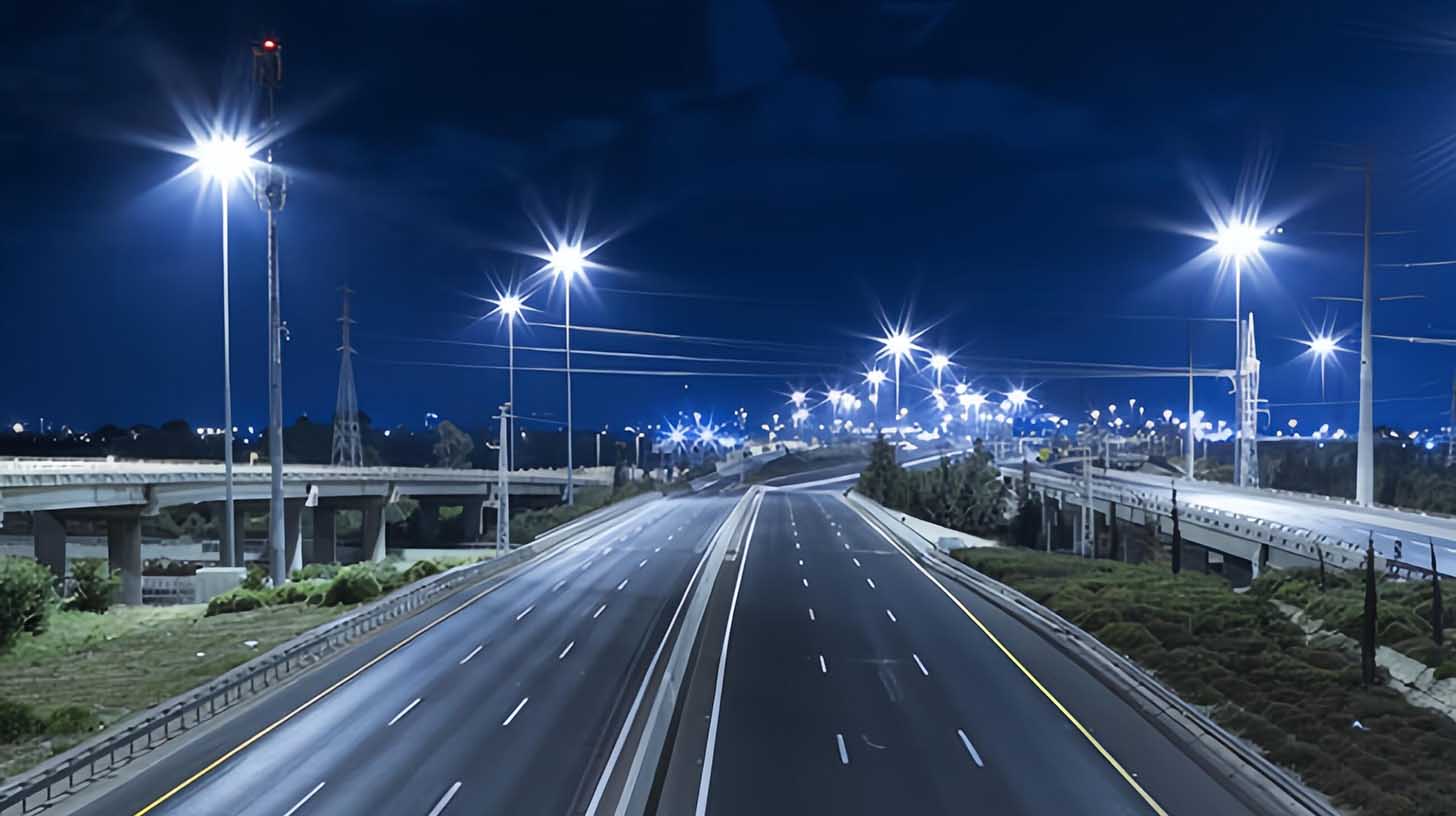
Lux Requirements for Street Lighting
The illuminance levels required for street lighting depend on the type of road, traffic conditions, and intended use. Below are general guidelines based on international standards like IESNA RP-8 (North America) and EN 13201 (Europe):
1. Highways
- Illuminance Level: 15–50 lux
- Usage: Designed for fast-moving vehicles with no pedestrian activity.
- Uniformity Ratio: High uniformity is required to ensure safety at high speeds.
2. Urban Roads
- Illuminance Level: 10–30 lux
- Usage: Roads with moderate traffic, including vehicles and pedestrians.
- Uniformity Ratio: ≥ 0.4 to prevent dark spots.
3. Residential Streets
- Illuminance Level: 5–15 lux
- Usage: Low-traffic areas with a mix of pedestrian and vehicle activity.
- Uniformity Ratio: ≥ 0.3 for consistent lighting.
4. Pedestrian Pathways
- Illuminance Level: 5–20 lux
- Usage: Heavy pedestrian traffic, including parks and walkways.
- Uniformity Ratio: Emphasis on visibility and comfort.
5. Intersections
- Illuminance Level: 20–50 lux
- Usage: High-risk zones where vehicles and pedestrians converge.
- Uniformity Ratio: Enhanced lighting to improve visibility and reduce accidents.
These values provide a general framework, but specific requirements should always align with local regulations and standards.
| Road Type | Illuminance Level (Lux) | Usage | Uniformity Ratio |
|---|---|---|---|
| Highways | 15–50 | Fast-moving vehicles, no pedestrian activity | High |
| Urban Roads | 10–30 | Moderate traffic, vehicles & pedestrians | ≥ 0.4 |
| Residential Streets | 5–15 | Low-traffic, mix of pedestrians & vehicles | ≥ 0.3 |
| Pedestrian Pathways | 5–20 | Walkways, parks, heavy pedestrian traffic | Focus on comfort |
| Intersections | 20–50 | High-risk zones with vehicle & pedestrian flow | Enhanced lighting |
Key Considerations
- Traffic Volume and Speed: Higher speeds and traffic volumes demand more illuminance.
- Road Width: Wider roads may require more light sources for adequate coverage.
- Environmental Conditions: Darker areas (e.g., rural roads) may need higher lux levels compared to urban areas with ambient light.
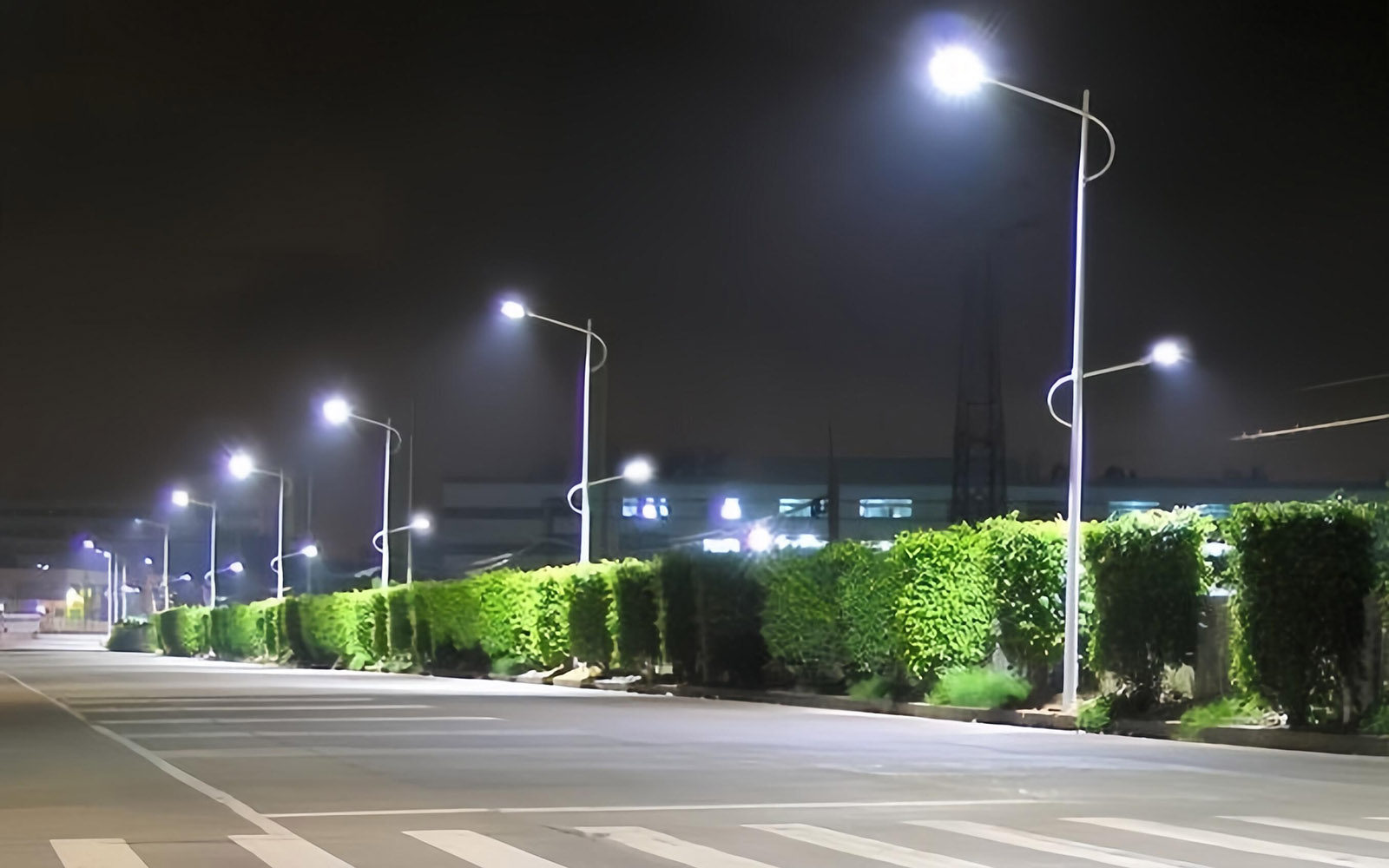
What Color Streetlights Are Best?
The best streetlight color depends on safety, visibility, energy efficiency, and environmental impact. Streetlight color is determined by color temperature (Kelvin, K) and color rendering index (CRI).
1. Best Color Temperature Range
- 3000K to 4000K (Neutral White Light)
- Ideal for urban areas, residential streets, and pedestrian pathways.
- Balances visibility and comfort.
- Produces minimal glare and reduces eye strain, improving safety.
-
4000K to 5000K (Cool White Light)
- Best for highways, industrial areas, and high-traffic roads.
- Enhances visibility and contrast, useful for fast-moving vehicles.
- May feel harsh, so it’s less recommended for residential or pedestrian zones.
2. Color Rendering Index (CRI)
- A CRI of 70+ is recommended to ensure accurate color perception.
- High CRI helps recognize objects, signs, and pedestrians, improving safety.
3. Factors Affecting the Choice of Color
- Application
- Warm white (3000K–3500K) for residential areas to create a cozy atmosphere.
- Cool white (4000K–5000K) for highways and industrial zones to maximize visibility.
- Light Pollution
- Lower CCT (3000K or below) reduces blue light emission, minimizing skyglow and wildlife disruption.
- Visibility and Safety
- Cool white (4000K+) improves contrast but may be too harsh in excessive amounts.
- Neutral white (3000K–4000K) provides clarity without discomfort.
4. Environmental and Health Considerations
- Blue Light Sensitivity: Too much blue light (above 5000K) can disrupt sleep cycles and harm nocturnal wildlife.
- Dark-Sky Compliance: 3000K–4000K is recommended in areas with dark-sky regulations to minimize light pollution.
Recommended Color Temperature by Application
| Application | Recommended CCT | Reason |
|---|---|---|
| Residential Areas | 3000K–3500K | Creates a warm, inviting atmosphere |
| Urban Streets | 3500K–4000K | Balances visibility and comfort |
| Highways | 4000K–5000K | Maximizes contrast and road clarity |
| Pedestrian Paths | 3000K–4000K | Reduces glare, improves eye comfort |
| Industrial Areas | 4000K–5000K | Enhances visibility in work environments |
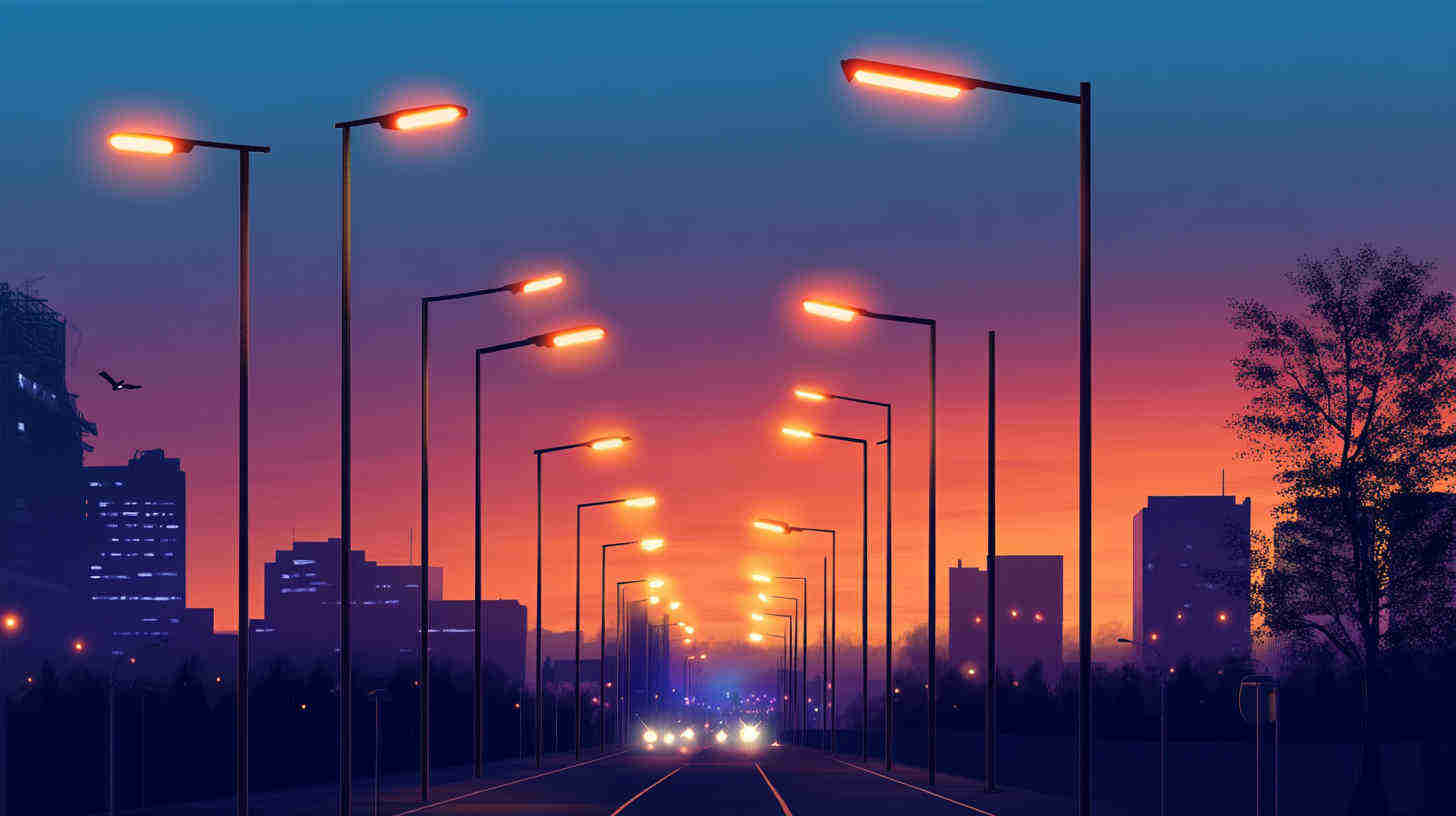
Conclusion
Designing effective street lighting requires careful consideration of illuminance levels, light distribution, and color temperature to optimize safety, efficiency, and environmental impact. Selecting the right lux levels, CCT, and CRI ensures clear visibility while minimizing glare and light pollution.
For most street lighting applications, a neutral white (3000K–4000K) light provides the best balance between visibility, comfort, and energy efficiency. Cooler white lights (4000K–5000K) should be used where maximum contrast and visibility are needed, such as highways or high-traffic zones.
If you need assistance with street lighting solutions, feel free to contact us. Our lighting experts are here to help you find the best options for your project.



